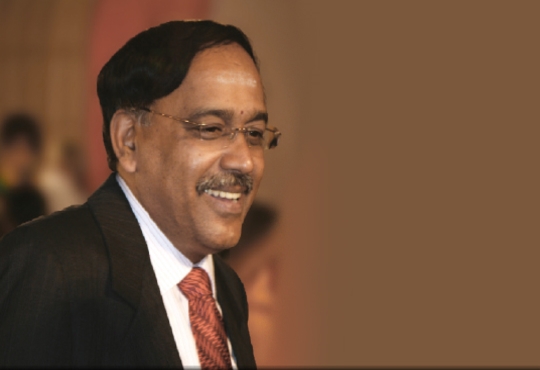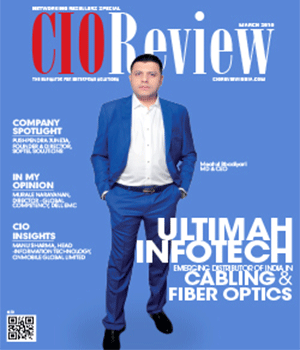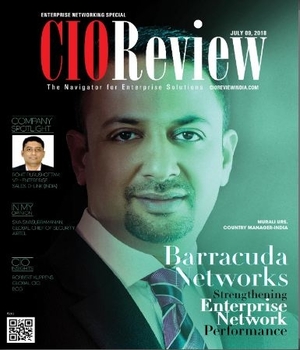
Being Time Effective Makes Us Cost Effective
Suvrata Acharya, VP and Vertical Delivery Head, NIIT Technologies Limited | Thursday, 20 April 2017, 10:22 IST
 IT market today is looking for directions to make application development cheaper without affecting the quality. Today the traditional offshoring model based on labor arbitrage is struggling to survive. Enterprises are adopting agile development along with automation and cloud based models to reduce the risk and cost. The focus is clearly on building a business model that is based on lean practices i.e. best use of effort and sharing of available resources. Indian Space Research Organization (ISRO) used this approach successfully to deliver multiple space programs in a cost effective manner. “Time Effectiveness makes us Cost Effective”, is the success mantra cited by an ISRO scientist. Recently ISRO made a world record by launching 104 satellites through a single rocket. This has helped them capture a bigger share of global space programs. The cost of ISRO’s Mars expedition program is just $75 million, which is unbelievably low compared to similar programs executed by other global space agencies. ISRO is the most profitable space center in the world because of its innovative cost effective business model. IT Industry can adopt a few of their best practices like focusing on cost-effectiveness, modular architecture, smaller size tests and many more, while managing the cost and performance of the applications.
IT market today is looking for directions to make application development cheaper without affecting the quality. Today the traditional offshoring model based on labor arbitrage is struggling to survive. Enterprises are adopting agile development along with automation and cloud based models to reduce the risk and cost. The focus is clearly on building a business model that is based on lean practices i.e. best use of effort and sharing of available resources. Indian Space Research Organization (ISRO) used this approach successfully to deliver multiple space programs in a cost effective manner. “Time Effectiveness makes us Cost Effective”, is the success mantra cited by an ISRO scientist. Recently ISRO made a world record by launching 104 satellites through a single rocket. This has helped them capture a bigger share of global space programs. The cost of ISRO’s Mars expedition program is just $75 million, which is unbelievably low compared to similar programs executed by other global space agencies. ISRO is the most profitable space center in the world because of its innovative cost effective business model. IT Industry can adopt a few of their best practices like focusing on cost-effectiveness, modular architecture, smaller size tests and many more, while managing the cost and performance of the applications.
Sharing Cost using Collaborative Consumption Model
Today, the biggest challenge in rapidly evolving business models is to define an architecture that supports it long term. Future business models will be developed as a combined effect of wearable, mobile, big data technologies and cloud computing. For years, ISRO has adopted a business model which is focused on co-creation to achieve milestones. They have undertaken joint launch missions with various space agencies to save the cost. They share cost by lending percentage area of payload to different space agencies. Today, the major growth sector is sharing economy that allows the optimization of resources through the mutualization of excess capacity. This model is flourishing because the consumers are demanding faster and low cost services. Design and development of the future applications will be based on collaborative consumption models that will be based on sharing, lending and swapping of other product’s functionality. Industry will move towards peer to peer business model that requires higher degree of interactions with the peer.
Modular Architecture with Long Term Focus
ISRO has adopted a modular approach while designing their systems. They are still using the same technology that was used in 1970 for their launch vehicle with added cryogenic engines to achieve higher engine power. Traditionally, most of the architecture created is integrated in nature. In a modular architecture, one can add or remove components without affecting the rest of the system. While planning the IT infrastructure, mostly modular approach is adopted to plan the capacity. In case of enterprise application, modular approach is followed during design and build stage but not in the deployment stage. The final application is deployed as a single unit, which makes the overall application monolithic. Today enterprises are moving towards micro service based architectures that consist of developing multiple independent deployable components. Most of the consumer focused applications such as eBay, Amazon have already moved from monolithic architecture to micro-services based architecture. This approach helps them respond to new business faster and cost effectively.
Nimble Tasks, Easy to Automate
ISRO avoids ground tests which are highly time consuming and expensive. Rather doing fully integrated testing which is expensive, they test smaller size module to get the best value for the money. Testing is always a time consuming and expensive activity. Automation tools are used to speed up the testing process and reduce the manual effort. Unfortunately, most of the automation strategies are based on monolithic architecture. It does not cater to the complexities involved in modular architecture. New service virtualization technologies help in addressing these challenges, but these need to be incorporated in the architecture and product life cycle.
Today, agile life cycle of application development is leading towards more nimble tasks which are less time consuming and can be easily automated.
Cross Skilling Leads to Time Effectiveness
Scientists in the space program are capable of working in multiple disciplines. They strongly believe that being time effective leads to cost effectiveness. An individual who has multiple skills can help achieve more productivity. Every Future IT workforce has to be cross-skilled so as to give more output than what is expected from a single skilled resource.
The space programs of Russia and America are primarily focused on robustness and optimization leading to higher cost. On the other hand, ISRO focuses primarily on cost effectiveness. Today in IT industry, there is a limited attention towards the cost aspect of new application development. If we follow ISRO’s cost-effective model, then the planning and execution must encompass resource optimization, increased reusability, adoption of open source tools and multi-skills workforce development.
CIO Viewpoint
Challenges And Opportunities Involved In...
By T.G Dhandapani, CIO, TVS Motor
Ever-Changing Landscape of ERP
By Jeff Wagaman, VP, Enterprise Solutions & Executive CIO, Smiths Medical
Can SDN Address the Challenges in Enterprise...
By Manu Sharma, Director – IT and Corp Security, OnMobile Global Limited
CXO Insights
Elevating Efficiency and Productivity: Network...
By John Diamond, Senior Solutions Architect, Product, Park Place Technologies
By Chander Sharma, Head IT, Accutest Research Laboratories Pvt. Ltd.
Security Strategy Is Now Part Of Tech Strategy...


.jpg)


.jpg)




